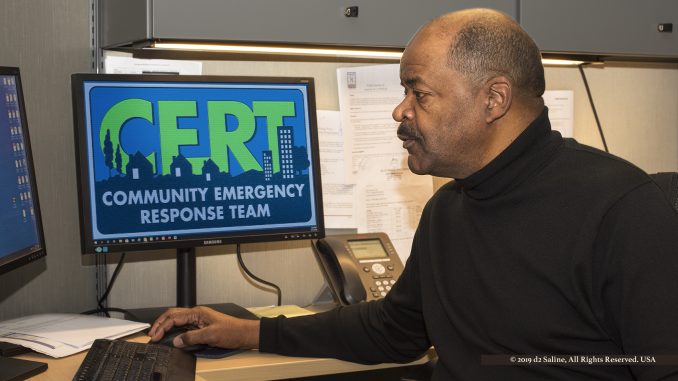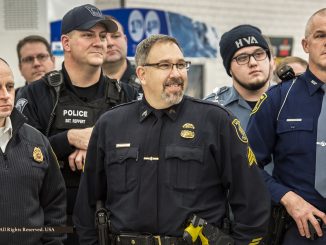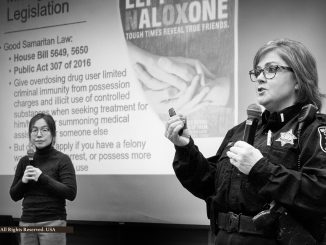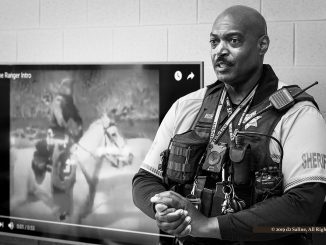
The need for “citizen responders” formally trained to serve in situations of sudden calamity was first addressed by the Los Angeles City Fire Department in 1985, and proven two years later through wide-area deployment during the Whittier Narrows earthquake. [1,2]
By 1993, “Community Emergency Response Team” training was organized nationally through the Federal Emergency Management Agency (FEMA) under the United States Department of Homeland Security. [3,4]
The Community Emergency Response Team (CERT) program educates volunteers about disaster preparedness for the hazards that may impact their area and trains them in basic disaster response skills, such as fire safety, light search and rescue, team organization, and disaster medical operations.
CERT offers a consistent, nationwide approach to volunteer training and organization that professional responders can rely on during disaster situations, which allows them to focus on more complex tasks.
Thought of “mass casualty” events tends to focus on the terrorist attacks of September 11, 2001, and soft target incursions. As time and iterations have passed, defenses and countermeasures have adjusted. [5-8]
At the same time, incidents related to weather, flooding, and industrial accidents pose similar potential for harm to individuals and property. In an interview with Saline Journal in the days before elections last November, Council Member Jack Ceo referenced “the County’s Emergency Action Plan,” which “is extensive enough to be able to dispatch victims to hospitals throughout Michigan.” [9-14]
Local Community Emergency Response Teams are endorsed by FEMA as a proven means of maximizing real-time setup, coordination, and facilitation of field response centers. CERTs are made up of trained, credentialed volunteers, and reporting to their municipal public safety offices.
Their utilization, however, began to decline “about seven or eight years ago,” Marshall Johnson, Emergency Management Coordinator with the Novi Police Department told Saline Journal during an interview at his office this week. “There used to be federal funding for training and equipment and administration. When that happened and the municipalities had to pay, they had a hard time figuring out how to add it as a new budget item of its own.” [15]
Novi Michigan — which is where our current Police Chief Jerrod Hart served just prior to taking his position Saline — stands out as a strong, well utilized CERT operation. “Stable for the last eight to ten years,” according to Coordinator Johnson. [16]
We’ve had CERT here for twelve years. I’m the third coordinator; it’s a paid position.
Core training is set down by FEMA. We offer that basic eight-week course once a year; FEMA dictates content, we provide the trainers. So, it’s broadly the same across the United States, with particulars along the way based on your home operation. Michigan has different weather, different infrastructures, which means different kinds of disaster potentials here versus Florida. Our CERTs are trained for those specifics.
Novi CERT currently has ninety-seven members on its active roster. Even for the most modest of intiatives, ten to fifteen would be required for “critical mass.”
Not surprisingly, “structure” and “disipline” are perhaps more important in this volunteer intiative than in any other. Quick decisions need to be made in setting up command centers on the ground and following the directions of its leader — which will almost certainly differ fron incident to incident. The rules for administering CPR and first aid, to whom, and for how long, are not the same here, either.
The first priority in care for any CERT member is that CERT member her- or himself.
Always focus on ‘doing the most good for the most people’ when taking actions.
“The relationship among all team members here is more important than any other group you’ll volunteer for,” Marshall Johnson emphasized.
You have to be responsible for your own safety. You have to be responsible for the safety of your buddy. You have to completely trust your buddy to have a hand on your safety. Completely. [17]
There has to be esprit de corps in your CERT. This isn’t a ride-along with someone you think you know, just for a shift. CERTs have to have camaraderies that you can switch-about. That’s an important thing we practice in training: You can’t just communicate with people you know, you have to have that level of communication and partnership with any other CERT member you may happen to need to work with — under a highly stressful situation.
Life and death.
Much as Community Emergency Response Team effectiveness emphasizes structure, it became clear in the course of this interview that the Novi Police Department CERT owes as much of its longevity to process.
In the case of Marshall Johnson, he, himself, maintains regular written contact with his team through one-page newsletters that he produces twice each month and sends out via eMail. Some include schedules, others official updates from FEMA. Just as importantly, they include opportunities for enrichment that he knows will be of particular interest to members of his team. Some come from the community health department, others from local organizations in need of support for events.
Marshall Johnson knows what will interest his team members because he makes it a priority to know and engage personally with his team members.
Again, in an environment no longer supported by federal funding, all of this comes at a cost to the local taxpayer. In the case of Novi Michigan, however, government officials and that constituency clearly see value in return on that investment.
References
- “Community Emergency Response Team” Ready (Official Website of the Department of Homeland Security).
- “Remembering the Whittier Narrows Earthquake” (October 9, 2017) Loss Angeles Region, American Red Cross.
- “About the Agency” FEMA.
- “About DHS” US Department of Homeland Security.
- “September 11 Attacks” (September 11, 2019) History.
- “Novi Police presentation emphasized vulnerabilities in faith-based facilities – Part 1: Defining the problem” Dell Deaton (September 7, 2019) Saline Journal.
- “Novi Police presentation emphasized vulnerabilities in faith-based facilities – Part 2: Introducing options” Dell Deaton (September 9, 2019) Saline Journal.
- “US border protection procedures, successes highlighted for Senator Gary Peters at DTW this morning” Dell Deaton (November 12, 2019) Saline Journal.
- “Exclusive interview with John Ceo, 2019 candidate for Saline City Council in Washtenaw County Michigan” Dell Deaton (October 30, 2019) Saline Journal.
- “Emergency Preparedness” Health Department, Washtenaw County Michigan.
- “Emergency Operations Center” Washtenaw County Michigan.
- “Personal Preparedness” Health Department, Washtenaw County Michigan.
- Community Emergency Preparedness Workbook & Guidelines, Washtenaw County Office of the Sheriff.
- “Michigan Prepares” Michigan.
- “Police Department” City of Novi.
- “Community Emergency Response Team (CERT)” City of Novi.
- “The Buddy System” Department of Health and Human Services, National Institute for Occupational Safety and Health, Centers for Disease Control and Prevention (CDC).



